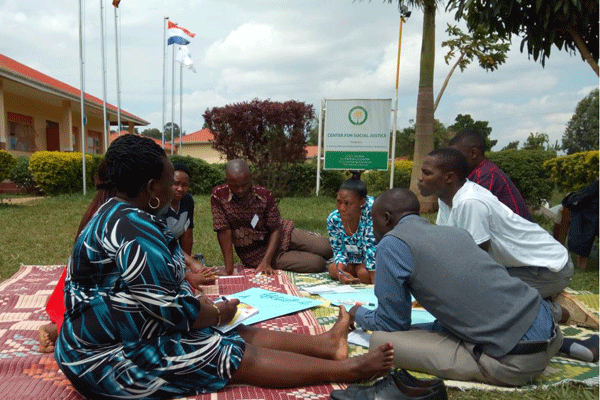Why we should digitalise health sector

What you need to know:
- The government should emphasise the study of ICT to all medical health workers.
Uganda’s health sector, like that of many developing countries, is faced with challenges ranging from limited resources to accessibility.
However, the integration of Information Systems Management (ISM) offers a promising avenue through which those hurdles can be overcome and in so doing lead to improved delivery of healthcare. First though, there are some obstacles that have to be cleared to allow for successful implementation.
ISM has been piloted in Mayuge District in Busoga Sub-region and its transformative potential is evident.
Improvements have been registered in efficiency and patient care through the implementation of electronic health records and The Health Management Information System (HMIS) . Electronic Health Records (EHRs) streamlines the management of patients’ information and ensures that health service providers have quick and secure access to patients’ medical histories and treatment plans.
This not only reduces the risk of medical errors, but also enhances the continuity of care for patients by way of follow ups and monitoring to check on their status.
Mothers can for example receive messages reminding them of when their next Antenatal care (ANC) and Postnatal (PNC) visits are. This improved immunisation and ANC. This has been evident in Kityerera and Bwondha where Living Goods has trained Village Health Teams (VHTs) in the use of smart phones.
The HMIS can help in the reporting of all epidemic and pandemic across the country in a timely manner. In 2016 for example, it was thanks to the use of HMIS033b, that a cholera outbreak in Bwondha lading site was reported.
With this system VHTs’ obtain reports from health centres at all levels and hospitals in the region. These reports help in decision making and allocation of resources to hospitals like Buluba Hospital and all health centres right from level one to level four.
Improved public health surveillance and response ISM facilitates real-time monitoring of disease outbreaks and epidemiological trends through, say, weekly reports, monthly, quarterly, annual reports.
By leveraging data analytics and predictive modelling, health authorities can promptly detect and respond to health threats, thereby mitigating the spread of diseases and minimising their impact on communities.
This proactive approach is crucial for maintaining public health and ensuring timely interventions. During my internship in Mayuge District, incidents of malaria, dysentery and bilharzia were detected and reported through the HMIS tools at Bwonda Health Centre II and Kigandalo Health Centre IV.
Since the community (population) is on the shores of Lake Victoria and the fact that these are entry points of sorts, all passengers that passed through Bwondha Landing Site were required to be screened for Covid-19 during the time of the pandemic. It was thanks to this measure that the first cases were of Covid-19 were detected and reported to the Ministry of Health using HMIS.
All health units, government, private health provider and private but not for profit facilities, were and still are required to submit such reports indicating the period covered i.e, the day, date, month and year.
Efficient resource management enables efficient management of resources at institutions such as the National Medical Store, which is charged with the distribution of medicines and sundries to public health facilities, including pharmaceuticals.
Automated inventory systems and supply chain management tools help healthcare facilities in Uganda optimise stock levels, reduce wastage, and ensure essential medicines are consistently available to patients and health facilities.
This was again evidenced at Kigandalo Health Centre IV and Buwaiswa Health Centre III in Mayuge District.
Similarly, medical records assistants still use HMIS to submit weekly surveillance reports to the district’s biostatistician and health officer.
It also facilitates community engagement through digital health education initiatives and interactive platforms that promote preventive care practices and encourage active participation in decision-making.
Living Goods Uganda has taken over this model of digital health (telehealth and telemedicine) and it has greatly improved people’s lives mainly in rural areas or semi urban areas. Village Health Teams (VHTs) are trained to use technology while assessing the patients.
However, despite its potential benefits, successful implementation of ISM in Uganda’s healthcare sector faces several challenges. Some of these are infrastructure challenges, inadequate internet connectivity and unreliable electricity supply in rural areas. These pose significant barriers to the seamless operation of ISM solutions.
In areas like Jaguzi Islands, Lolwe Island, Malongo, Busakira (Busaala) and Bwonda, all in Mayuge District, we had challenges with the internet connectivity. That coupled with the high cost of acquiring the necessary gadgets greatly affected online research and the flow of information.
The shortage of trained IT professionals and healthcare workers who are proficient in the use of ISM tools necessitates comprehensive capacity building initiatives as most of the health workers have limited knowledge on computer usage and management of electronic medical records and HMIS.
The government should emphasise the study of ICT to all medical health workers to bridge the gap because it is evident that ISM holds immense promise for revolutionising Uganda’s health care.
Kenneth Nelson Mwesigwa




